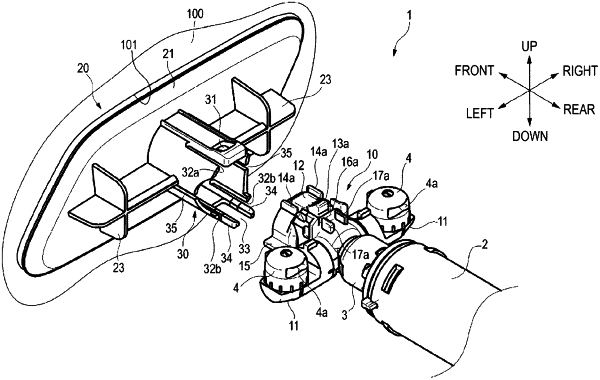| CPC B60S 1/52 (2013.01) [B05B 9/0413 (2013.01); B05B 9/0426 (2013.01); B05B 13/005 (2013.01); B05B 13/0278 (2013.01); B60S 1/528 (2013.01); B60S 1/60 (2013.01)] | 6 Claims |

|
1. A vehicle cleaner comprising:
a cylinder provided in an opening formed in a part of a vehicle body panel of a vehicle;
a piston supported to be movable forward and backward relative to the cylinder;
a nozzle holder provided in a vicinity of a front end of the piston;
a nozzle supported by the nozzle holder and configured to inject a cleaning liquid to an object to be cleaned of the vehicle in a state where the piston protrudes from the opening; and
a nozzle cover provided at a front end of the nozzle holder and configured to close the opening in a state where the piston is drawn into the cylinder,
wherein the nozzle cover includes a cover portion that closes the opening, and an engaging portion that protrudes from the cover portion toward the piston and engages with the nozzle holder,
wherein the engaging portion is provided with a concave portion for lance engagement on a first surface thereof, and an abutting rib on a second surface thereof opposite to the first surface,
wherein the nozzle holder is provided with a first convex portion on a first surface thereof, and a first abutted rib on a second surface thereof opposite to the first surface; and
wherein the first convex portion engages with the concave portion, and the first abutted rib abuts against the abutting rib.
|